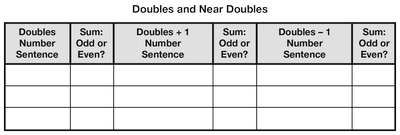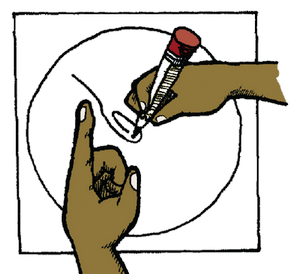Students categorize answers to doubles problems as even or odd. They discuss how the category of their answers changes when they add 1 to (or take away 1 from) their original answers. Students demonstrate doubles +1, and doubles −1 problems by building two-column towers made of connecting cubes. They also form number sentences based on their cube models.
Content in this Lesson
- Representing doubles and near doubles using counters and number sentences [E1].
- Representing addition involving doubles and near doubles using stories and drawings [E2].
- Using doubles to solve addition problems with sums to 30 [E5].
- Explaining solutions so that others can understand thinking [MPE5].
Assessment in this Lesson
| ASSESSMENT | EXPECTATION ASSESSED | Math Practices Expectation Assessed |
|---|---|---|
|
Doubles and Near Doubles Check-In: Questions 1–3 with Feedback Box Student Activity Book Pages 373–374 |
|
|
|
Even or Odd Check-In: Questions 1–3 Student Activity Book Page 380 |
|
















